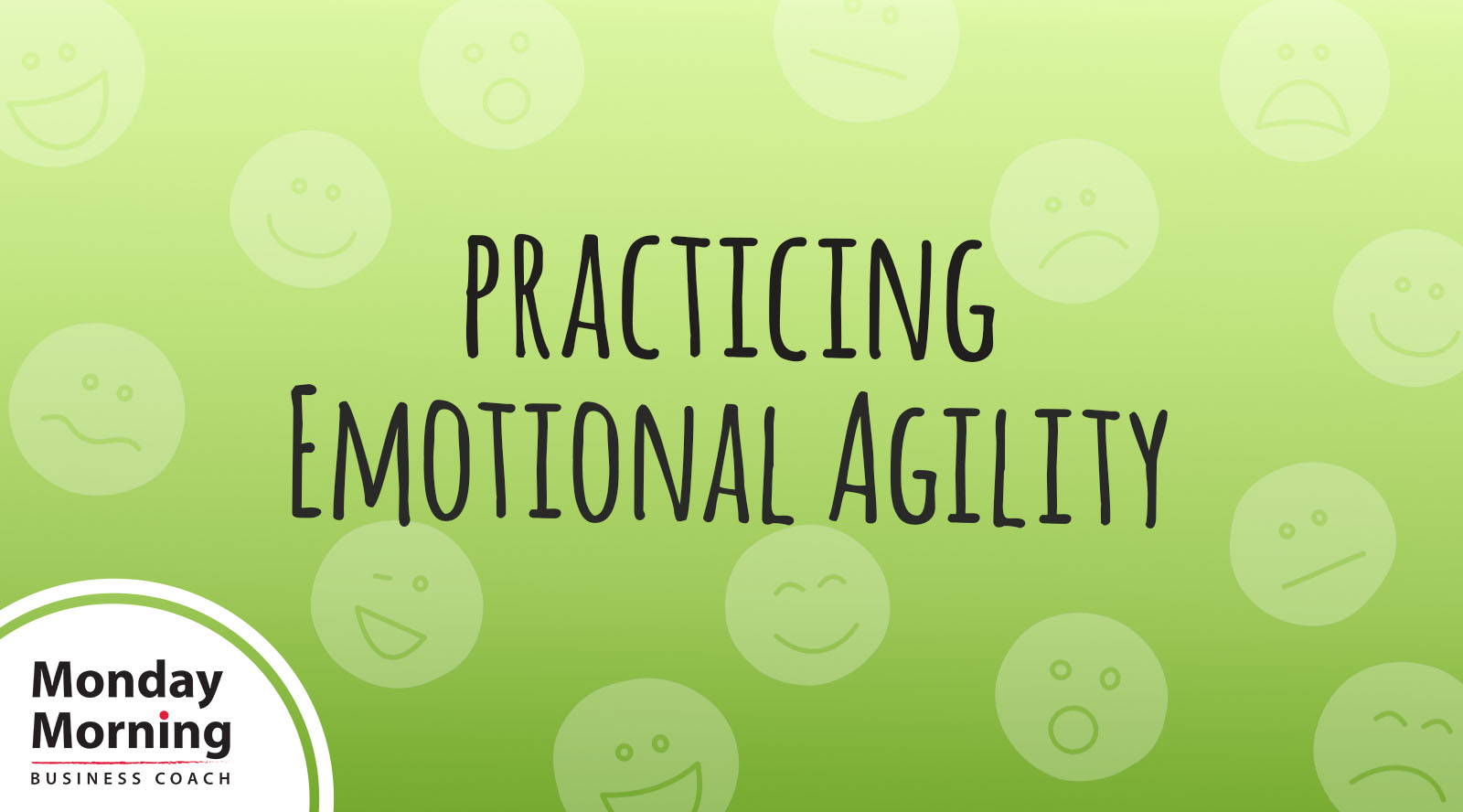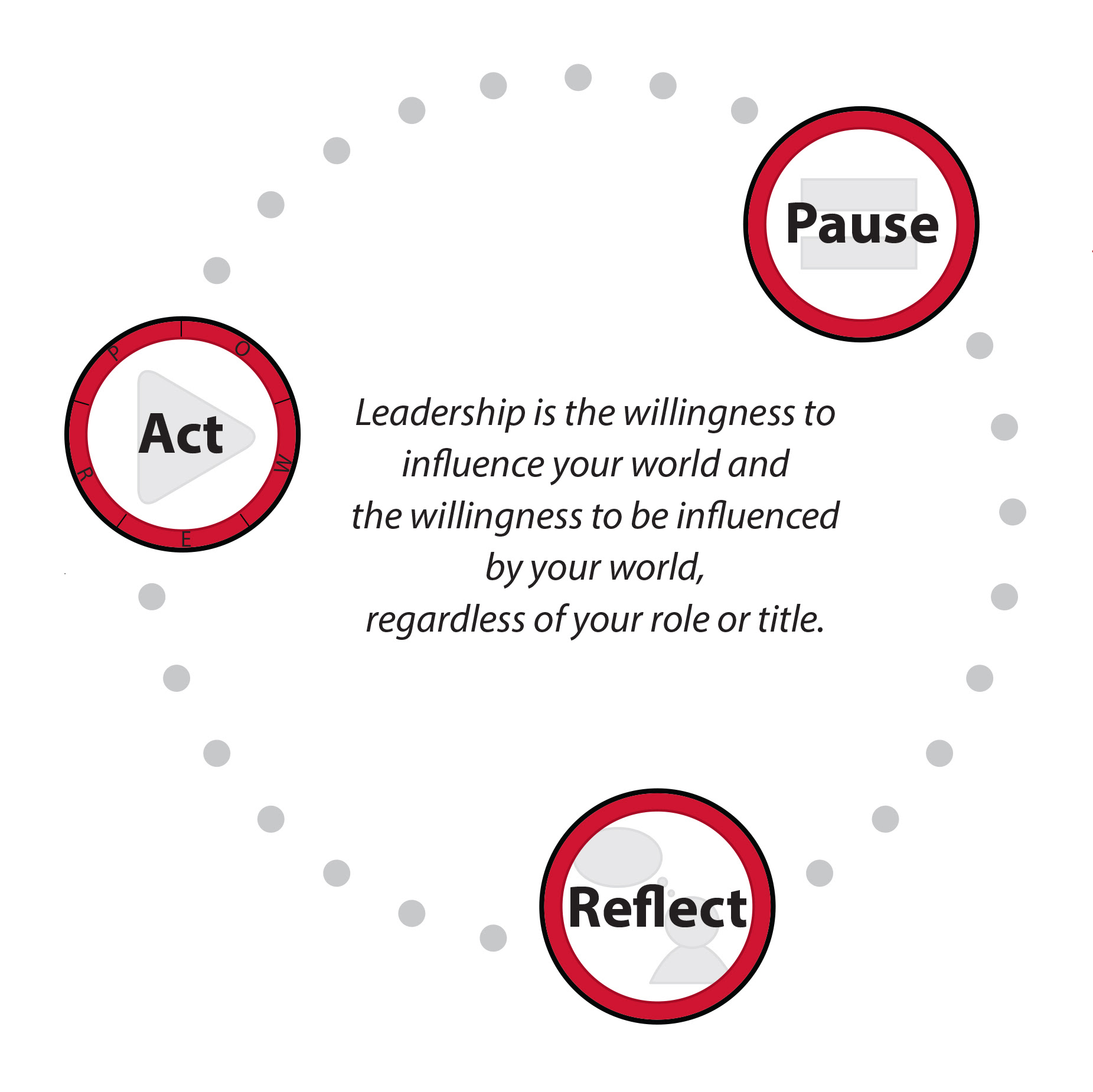We heard from many of you after our Emotional Agility post last week. You shared with us that you’re feeling feelings that you don’t want to feel (say that 10 times fast!), and you’re curious about how to put this concept of emotional agility into practice in your life. Thank you for reaching out.
In our experience, the most resilient and inspiring leaders are those who have emotional agility. We describe it as the ability to know and manage your emotions in real-time, without burying them, while also not believing them as truth.
Today, we’re sharing how you can build your ability to know, name, and hold your emotions with respect, and as data, but not as truth about what you must do.
In our Leader in You® model, we’ve woven in tools that can increase your emotional agility. This model helps you to acknowledge your feelings and to be curious about them. It can support you in holding your experience with respect while also moving forward based on your goals and values.
Here are the three main components of The Leader in You framework:
PAUSE
- Pausing is a game-changer. It can look like you’re just taking a moment to breathe, taking a sip of water, making a note, etc.
- While you’re pausing, what you’ll actually be doing is asking yourself, “Is what I’m about to do or say in alignment with my goals and values?”
- Remind yourself that it’s normal to have emotions, but you don’t have to act on them in a reactive way. You can respond to them as a thoughtful and inspiring leader.
REFLECT
- Ask yourself three questions to get clearer about what’s going on inside of you and to connect to your values.
- What am I afraid of, angry about, disappointed in, or hurt by in this situation?
- What do I do when I feel that?
- What would I do if I felt safe, confident, and at my best?
- These questions can help you get some perspective on your feelings. They can also give you a chance to look at what you’re tempted to do versus what you would do if you were showing up at your best.
ACT with POWER
- Look for the possibilities in the obstacles and challenges. While you may feel anxious or shaken by a challenge, remember to honor those feelings and then explore the possibilities inherent in those very challenges.
- Take ownership for achieving success or failure and let people know why it matters to you. You may feel frustrated with others and even embarrassed by failure, but remember that you don’t have to believe these feelings. You’ll be more powerful if you step back into your center rather than blaming others or the circumstances.
- Explore how you can create a sense of “we” with the people you work with to create success or to develop their skills.
- Enable action. Even if it’s a small step, allow yourself to move in new ways. Use your new awareness to move forward with things that are in alignment with your goals and values versus out of reactivity.
- Review and refine so that you can learn from each experience and then, consciously practice a new relationship with your emotions and history.
As you can see, acknowledging your emotions is an important part of the model, but it doesn’t stop there.
The goal is to use your emotions as data
and then make decisions about how to take action.
There’s considerable information that says the most successful leaders use the whole of themselves to lead. To do this, you need to bring all of yourself to your work and your life.
Download the Leader in You framework and take a moment to fill it out. Let us know what you find!
DOWNLOAD THE LEADER IN YOU PDF HERE


